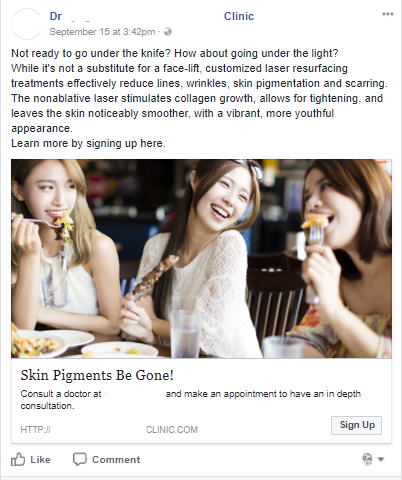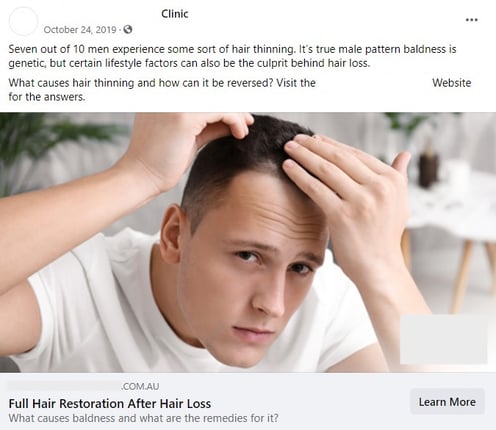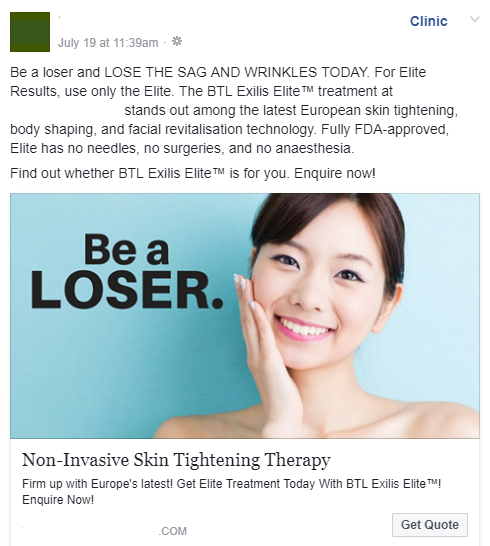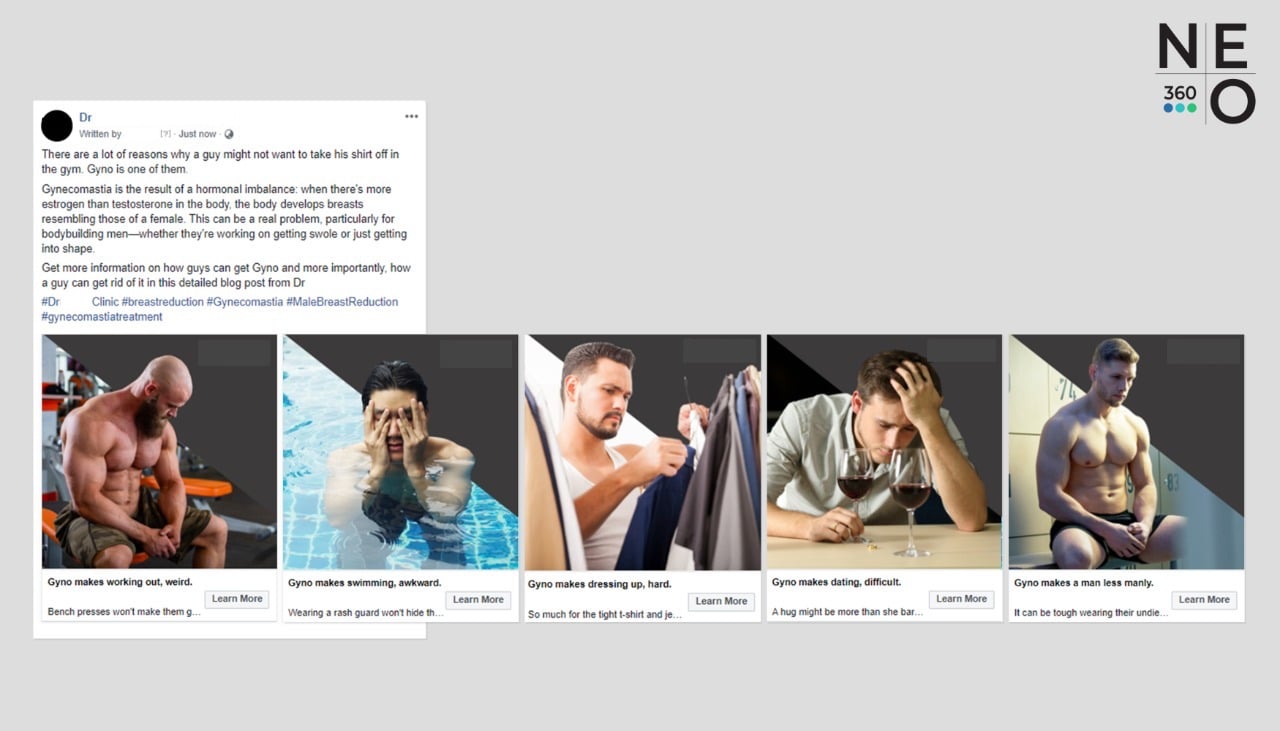5 Ways to Create Medical Ads that are Creative AND Compliant

Medical advertising is like a minefield—you gotta tread carefully, because one false step and things could blow up in your face.
You may have waltzed your merry way through the digital space putting out ads, publishing blogs, and posting on social media without a care in the world thus far. But you just never know when some regulatory watchdog (or competitor) is going to point an accusing finger and a letter from the authorities arrives in the mail.
A smart medical marketer, therefore, knows beforehand that there are mines in the field, and takes special precautions to make sure every ad, post or blog, and every word, number or image, is within the bounds of what is allowed.
But (to put it plainly), does this mean that the ads of your medical practice (or everything else you put out there, for that matter), have to be boring? After all, better safe than sorry, right?
Rules are rules.
It’s true that there are laws and that we, as responsible digital marketers—and citizens, need to abide by them. Pretty much every country in the world has laws that govern ads for doctors and medical services. Here in Singapore, for instance, we have the PHMC (Advertisement) Regulations, while over in Australia, they have the AHPRA Guidelines.
As we’ve said in a previous post, the folks in charge don’t do this to make life miserable for advertisers or their agencies—they do it to protect people. Whether they do it on purpose or not, there are unfortunately some providers out there who might put things out that mislead people into paying for products or services that they hope—but won’t fix whatever medical problem they have.
Given the altruistic reasons for putting these regulations in place, it’s our duty as responsible medical practitioners and digital marketers to do our best to play by the rules. But the fact remains that these rules make the already challenging-in-itself task of medical marketing even more challenging.
As if government regulations weren’t enough, the advertising platforms themselves have a plethora of proscribed practices for medical ads. Google, for one, has its Healthcare and medicines advertising policies, while Facebook has its Personal Attributes advertising policies which prohibit you, for instance, from implying that your target audience has a certain condition or disease.
Roll your eyes at your own risk.
“Whatever,” you might say. “Rules are for the obedience of fools.” Well, you don’t have to look far to find out just how foolhardy—and costly such an attitude can be. In Singapore, a PHMC Regulations violation could cost you SGD2,000, while in Australia, an AHPRA violation could cost you up to AUD127,500.
For its part, Google says they may never accept advertising from you, while Facebook may simply ban your ads or prevent them from running. Small wonder, therefore, that so many ads for medical practices end up on the safe side of staid. (We may also say “big” wonder for the number of ads out there that run with seemingly little regard for the rules.)
“Safe” makes sorry ads.
But if “marketing” is all about getting your message (i.e. “I offer services that can help you”) across to an audience (i.e. potential patients), there’s precious little chance that you can reach them with a boringly safe ad. And if you’re spending thousands of dollars on your advertising, we’re guessing you don’t want to be throwing your hard-won resources away on a precious little.
Because we know ad dollars don’t grow on trees, we encourage you to do everything you can to make the most out of every cent. That includes creating ads that cut through the clutter of the gazillions of other ads of your competitors—and the best way to do that is to create creative ads.
But can you be creative and stay on the right side of the regulations that be? Having created successful (if we say so, ourselves) ad campaigns for various medical practices in Singapore and Australia, we can very well say that yes, you can—and we’re here to share five ways you can do just that.
5 ways to get creative and stay compliant.
1. Make your ads relatable.
When your target market watches or reads your ad, they have to be able to relate to it. Describe or depict situations your audience might be in and how they might react (taking care, of course, to not run afoul of FB’s Personal Attributes policy). In other words, take the ad out of the theoretical and into your target market’s actual, everyday life.

This ad, for instance, shows the clinic’s target market hanging out with friends, which is something they normally do. The lady on the left might be looking at her friend in the middle and thinking to herself, “Wow, her skin looks so good”—which is also something that (admittedly) usually happens (even between friends).
2. Make your ads emotional.
As cerebral as the practice of medicine is, there’s no denying that the healthcare industry is emotional one. People want to feel better—whether physically or about themselves—and they want the people they care about to feel better, too. Empathise with how your target market feels and express that empathy in your ads.

In this ad, the copy shows how the doctor empathises with an expectant mother. Having a baby is an emotionally-charged experience through which this clinic offers to guide expecting mums with thoughtful and much-needed advice.
3. Make your ads humanise your medical practice.
Because medicine is so cerebral and technical, and involves a lot of fancy equipment in a sterile environment, it can be easy for your target market to regard you as somewhat distant or beyond their reach. But as we’ve written in a previous post, there are ways to show potential patients that you’re human, too, and that your practice genuinely cares about them getting better.

Instead of showing hair growth diagrams or Olsen scales of baldness, this ad spotlights the very human side of hair loss: a guy who looks way too young to be worried about losing his hair, is worrying about premature baldness. The ad reflects how the clinic is able to sympathise with the sufferer, as well as focus on the science of hair loss treatments.
4. Make your ads metaphorical.
There’s no getting around the fact that a lot of things in healthcare are better left un-shown as well unsaid. Indeed, PHMC Regulations prohibit distasteful or unseemly images, and AHPRA can come down hard on “unrealistic photos”, for instance, of the kind of results that may be achieved through cosmetic surgery.
If your ad endorses, say, a procedure that may be challenging to depict in a decent or tasteful manner, it is possible to find other ways to get the message across. You might try using metaphors, or likening the “unshowable” to something a little more palatable, or experiment with ways in which the copy work can work with the visuals.

This ad for breast augmentation, for instance, doesn’t show either the procedure or its results, but rather features a model who represents the kind of lady who chooses or who has successfully undergone the procedure. The lady is chic and sophisticated as shown by her high fashion make-up and jewellery. That the ad is actually one for implants is expressed in the copy or text.
5. Make your ads visual.
The healthcare industry is swimming in information it can and should share with potential patients and the public at large. But hardly anyone outside of the industry has the time or inclination to read the equivalent of a medical textbook in an ad, which is where well-designed, compelling visuals come in.
You may also double the impact of a compelling visual by pairing it with just the right words, as may be seen in the ad below. The 1-2 combo of the image text and the image of the clear-complexioned lady below all but forces the audience to read the body copy to find out what the ad is all about.

We highly recommend the use of other visual formats such as video, infographics and sequential or carousel images like the ones below in your ads, as well.

We’d like to wrap up this listing by letting you in on a little secret: the key to creating creative, yet compliant ads is to put yourself in the patient’s shoes. Getting to know your target audience, creating buyer personas for them and understanding their buyer’s journeys will enable you to craft messages that speak to their minds, touch their hearts—and boost the chances of their choosing you.
If you could use a little friendly advice on putting our five ways into practice for your medical practice, our digital marketing doctors are always in.
About the Author
Managing Director
A Mechanical Engineer by training who graduated from the Nanyang Technological University. With over 15 years of experience working in Start-Ups, SMEs and MNCs, he has driven sales revenue and leads across the Asia Pacific region. Shei Wah was one of the SEO Speakers at the first Search Engine Strategies Conference 2011 held in Singapore. As Managing Director, he aims to establish NEO360 in all of the world’s major cities. Even as he works toward this goal, Shei Wah also dreams of his children’s future happiness, and unwinds by doing calisthenics with his former school buddies three times a week.




